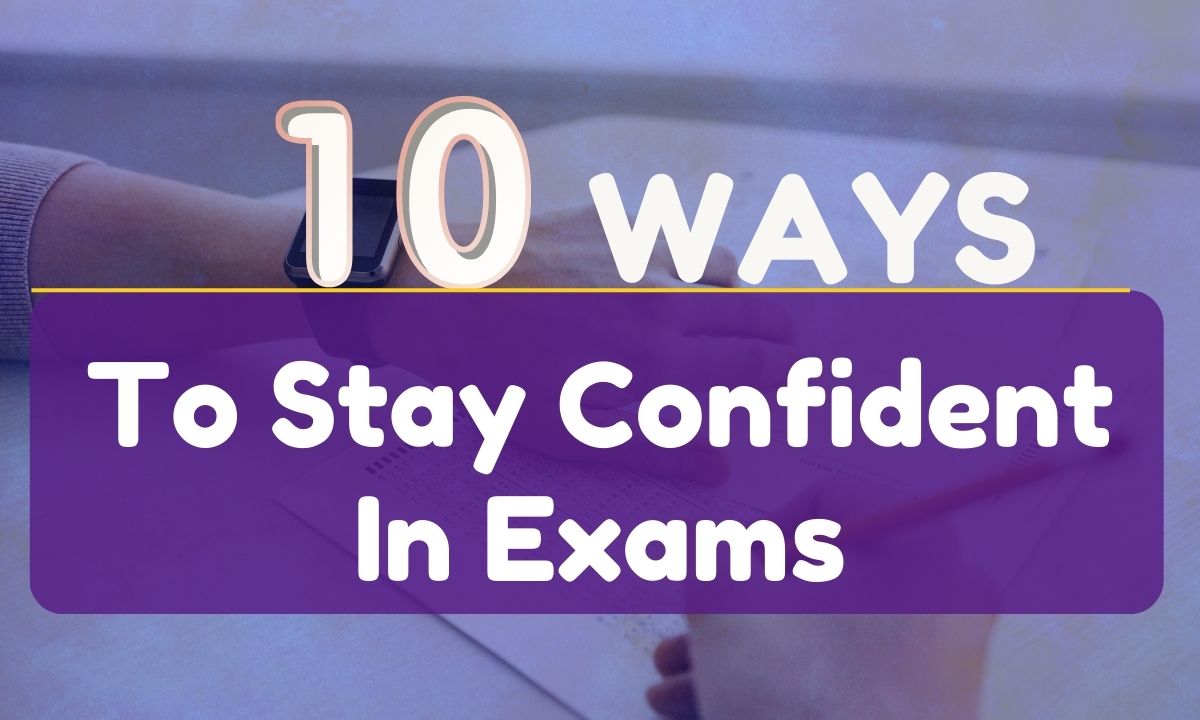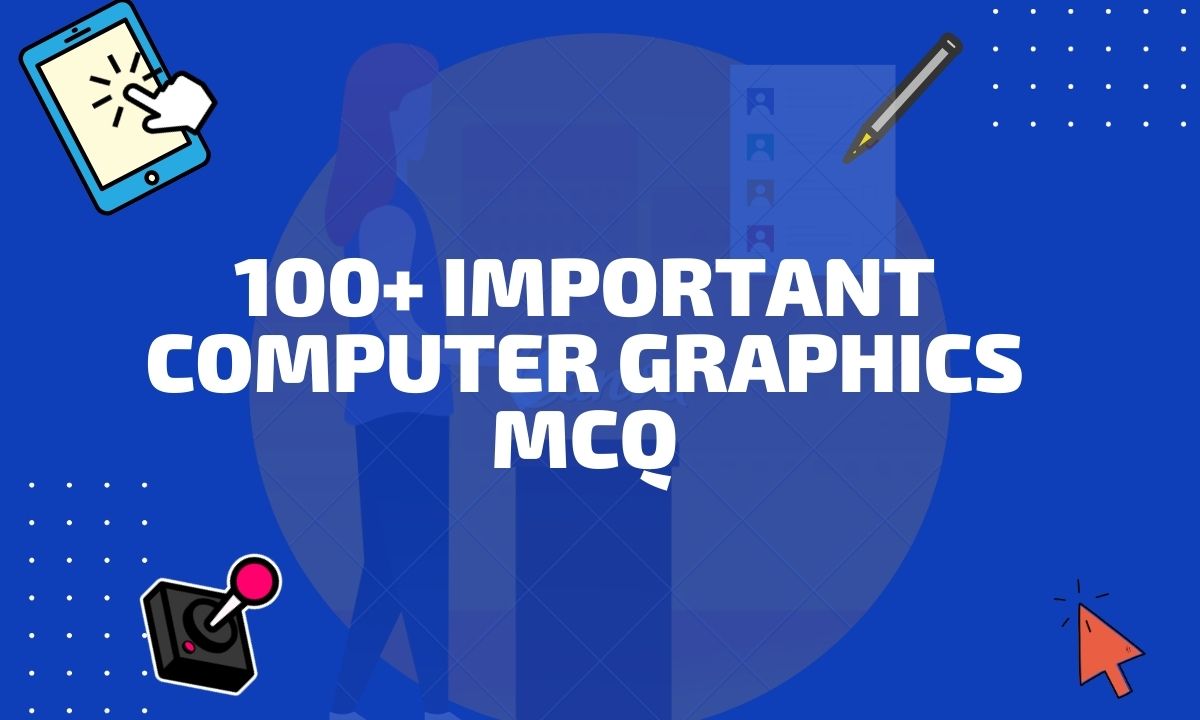Are you ready to test your knowledge of computer graphics or preparing for exams? Dive into the world of computer graphics MCQs, where each question challenges your understanding and sharpens your skills in this dynamic field.
In brief, computer graphics MCQs cover a wide array of topics, from fundamental concepts to advanced techniques. Whether you’re familiarizing yourself with rendering algorithms or exploring the principles of 3D modeling, these multiple-choice questions offer a comprehensive review of essential knowledge in computer graphics.
Alright, so we’ve barely scratched the surface with these questions about computer graphics. There’s a whole world out there just waiting for us to dive in! And guess what? So, let’s gear up for an awesome ride into the heart of computer graphics multiple choice questions. It’s gonna be way cooler than just ticking boxes on a quiz — promise you that!

Top 100 Computer Graphics MCQ
Here you will get to choose 1 correct option out of 4 options and show the correct answer because it provides Computer graphics mcq with answers.
Top 20 multiple computer graphics multiple choice questions.
1. What does RGB stand for in the context of computer graphics?
2. Which programming language is commonly used for graphics programming?
3. What is the purpose of the Z-buffer in computer graphics?
4. Which rendering technique simulates the way light interacts with surfaces in the real world?
5. What does CAD stand for in the context of computer graphics?
6. Which graphical file format supports lossless compression and is commonly used for storing high-quality images?
7. What is the purpose of anti-aliasing in computer graphics?
8. Which term refers to the process of converting 3D models into a series of 2D images for display?
9. What is the term for a polygon with five sides in computer graphics?
10. Which type of graphics processing unit (GPU) architecture is commonly used for real-time rendering in video games?
11. What is the purpose of a shader in computer graphics?
12. What does GPU stand for in the context of computer graphics?
13. Which term refers to the process of converting analog signals into digital signals for computer processing?
14. Which graphical file format supports lossy compression and is commonly used for photographs and web images?
15. What is the term for a set of coordinates that defines the shape of a 3D object in computer graphics?
16. Which technique is used to create the illusion of depth in computer graphics by simulating how objects appear smaller in the distance?
17. What is the term for the process of determining which objects are visible in a scene and which are hidden behind others?
18. Which term refers to the process of creating a sequence of images to simulate motion in computer graphics?
19. Which term refers to the process of blending colors together to create a smooth transition between different shades?
20. Which term refers to the process of applying a two-dimensional image to the surface of a 3D object in computer graphics?
Chapter-wise computer graphics MCQs, so that you can prepare better for your exams in last minutes.
1. Introduction and application
1. What is the primary function of a raster-scan display in computer graphics?
2. Which type of display device uses beams of electrons to create images?
3. What is the main advantage of vector displays?
4. What are devices used to create physical copies of digital images?
5. How are input devices utilized in computer graphics?
6. In which field is computer graphics commonly used in medicine?
7. How are computer graphics applied in engineering?
8. What role does computer graphics play in art?
9. What is virtual reality (VR)?
10. How is computer graphics utilized in virtual reality?
Advantages and disadvantages of computer graphics
2. Scan‐Conversion
1. What is the process of converting a point into its corresponding pixel on a screen called?
2. Which algorithm is used for scan-converting a straight line and is based on floating-point arithmetic?
3. Which algorithm is preferred for scan-converting a straight line due to its efficiency in integer arithmetic?
4. Which algorithm is used for scan-converting a circle and is based on the properties of a midpoint and decision parameters?
5. Which algorithm is used for scan-converting an ellipse and is based on the properties of a midpoint and decision parameters?
6. In scan-converting a straight line using the DDA algorithm, what is the slope of the line if the change in y-coordinate is greater than the change in x-coordinate?
7. In Bresenham’s Line Algorithm, what is the decision parameter used to determine which pixel to plot next?
8. Which algorithm is preferred for scan-converting a circle due to its efficiency in integer arithmetic?
9. In the Mid-Point Circle Algorithm, what is the decision parameter used to determine the next pixel?
10. Which algorithm is used for scan-converting an ellipse and is derived from the Mid-Point Circle Algorithm?
3. Two –Dimensional Transformations
1. What is the process of moving an object along the x and y axes called in two-dimensional transformations?
2. Which transformation involves changing the size of an object in two-dimensional graphics?
3. What transformation involves rotating an object about a specified point in two-dimensional graphics?
4. What transformation involves mirroring an object across a specified axis in two-dimensional graphics?
5. Which transform involves skewing an object along the x or y axis in two-dimensional graphics?
6. What is the process of combining multiple transformations into a single transformation called in two-dimensional graphics?
7. What term refers to the process of converting objects from their world coordinates to screen coordinates in two-dimensional graphics?
8. Which line-clipping algorithm divides the clipping window into nine regions in two-dimensional graphics?
9. What is the process of moving an object in three-dimensional space along the x, y, and z axes called?
10. Which transformation involves changing the size of an object in three-dimensional graphics?
11. Which transformation involves rotating an object about a specified axis in three-dimensional graphics?
12. What transformation involves mirroring an object across a specified plane in three-dimensional graphics?
13. Which transform involves skewing an object along multiple axes in three-dimensional graphics?
14. What is the process of combining multiple transformations into a single transformation called in three-dimensional graphics?
15. What term refers to the process of converting objects from their world coordinates to screen coordinates in three-dimensional graphics?
16. Which projection concept involves mapping points from a three-dimensional scene onto a two-dimensional plane without any depth perception?
17. Which line-clipping algorithm is preferred for its efficiency and simplicity in three-dimensional graphics?
18. What is the process of determining which objects in a three-dimensional scene are visible and which are hidden from view?
19. Which type of transformation involves combining translation, rotation, and scaling operations in a single step?
20. What term refers to the process of mapping a three-dimensional scene onto a two-dimensional screen while maintaining perspective?
4. Curve Modeling
1. What type of curve modeling technique uses mathematical equations to define curves in computer graphics?
2. Which curve modeling technique allows for smooth curves defined by a series of control points in computer graphics?
3. What are the two common types of parametric cubic curves used in computer graphics?
4. What type of curve modeling technique is defined by a set of control points and interpolation functions in computer graphics?
5. Which curve modeling technique uses Bernstein polynomials to define curves in computer graphics?
6. What is the purpose of control points in curve modeling?
7. Which curve modeling technique allows for the manipulation of individual control points to adjust the shape of the curve?
8. What is the degree of a Bezier curve defined by?
9. What type of curve modeling technique is commonly used for creating smooth curves in computer graphics?
10. What is the primary advantage of using Bezier curves in curve modeling?
For you: Top 100 Computer Graphics Viva Questions
5. Surface modeling
1. What type of surface modeling technique uses a collection of polygons to represent a surface in computer graphics?
2. Which data structure stores information about the vertices of polygons in surface modeling?
3. What data structure stores information about the edges of polygons in surface modeling?
4. Which data structure stores information about the polygons and their attributes in surface modeling?
5. What term refers to a vector that is perpendicular to a surface and indicates its spatial orientation in surface modeling?
6. Which type of surface modeling technique uses a list of vertices and their connectivity information to define the surface?
7. What does a vertex table contain in surface modeling?
8. What does an edge table contain in surface modeling?
9. What does a polygon table contain in surface modeling?
10. What is the purpose of surface normals in surface modeling?
6. Visible Surface Determination
1. What type of technique determines the visibility of surfaces based on their representation in the image space in computer graphics?
2. Which technique detects and removes the surfaces that are not visible from the camera viewpoint in computer graphics?
3. What technique is used to determine the visibility of surfaces by comparing their depth values in computer graphics?
4. Which technique stores depth values for each pixel in a buffer to determine surface visibility in computer graphics?
5. Which technique breaks down the screen into horizontal scan lines and processes each line separately to determine surface visibility in computer graphics?
6. What type of technique determines the visibility of surfaces based on their representation in the object space in computer graphics?
7. Which technique identifies and removes surfaces that are facing away from the camera viewpoint in computer graphics?
8. What technique is used to determine the visibility of surfaces by sorting them based on their distance from the camera viewpoint in computer graphics?
9. Which technique stores additional information such as transparency and color for each pixel to determine surface visibility in computer graphics?
10. Which technique is commonly used for real-time rendering of 3D scenes due to its efficiency in determining surface visibility in computer graphics?
7. Illumination and Surface Rendering methods
1. Which algorithms are used to simulate ambient, diffuse, and specular reflections in computer graphics?
2. Which shading model calculates the illumination at each vertex of a polygon and interpolates the values across the polygon’s surface?
3. Which shading model calculates the illumination at each pixel on the polygon’s surface in computer graphics?
4. Which shading model assigns a single color to each polygon, regardless of its orientation or lighting conditions?
5. Which shading model calculates the illumination at each vertex and applies it to the entire polygon uniformly in computer graphics?
6. What is the primary advantage of the Phong shading model over the Gouraud shading model?
7. Which shading model is most commonly used for rendering smooth surfaces with realistic highlights and reflections in computer graphics?
8. Which shading model calculates the illumination at each vertex and interpolates the values across the polygon’s surface using linear interpolation?
9. Which shading model calculates the illumination at each pixel on the polygon’s surface using an interpolation of normals and colors?
10. Which shading model assigns a single color to each polygon, regardless of its orientation or lighting conditions, resulting in a flat appearance?
8. Introduction to Open GL
1. What is OpenGL primarily used for in computer graphics?
2. In OpenGL, what type of functions are used to handle events such as mouse clicks and keyboard inputs?
3. Which commands are used in OpenGL to specify the color of objects or background?
4. What OpenGL function is used to draw individual pixels on the screen?
5. Which OpenGL function is used to draw lines between specified points?
6. In OpenGL, what function is used to draw polygons with multiple vertices?
7. What term refers to the process of defining the perspective and position of the camera in OpenGL?
8. In OpenGL, what refers to the simulation of light and its effects on objects in the scene?
9. Which function in OpenGL is used to specify the position and properties of light sources in the scene?
10. What function in OpenGL is used to create a virtual camera and define the perspective for viewing the scene?
Conclusion
In conclusion, navigating the realm of Computer Graphics through these multiple-choice questions has been an enriching journey, offering essential insights into this dynamic field. From understanding the core principles of rendering and modeling to grasping the intricacies of animation and visual effects, these questions have provided a solid foundation for students at the bachelor level.
As you continue your academic journey, remember that the world of Computer Graphics is vast and continually evolving. Embrace the challenges and opportunities that come your way, and never cease to explore and innovate in this captivating domain. Keep learning, keep growing, and let your passion for visual computing propel you toward new heights of creativity and achievement.



